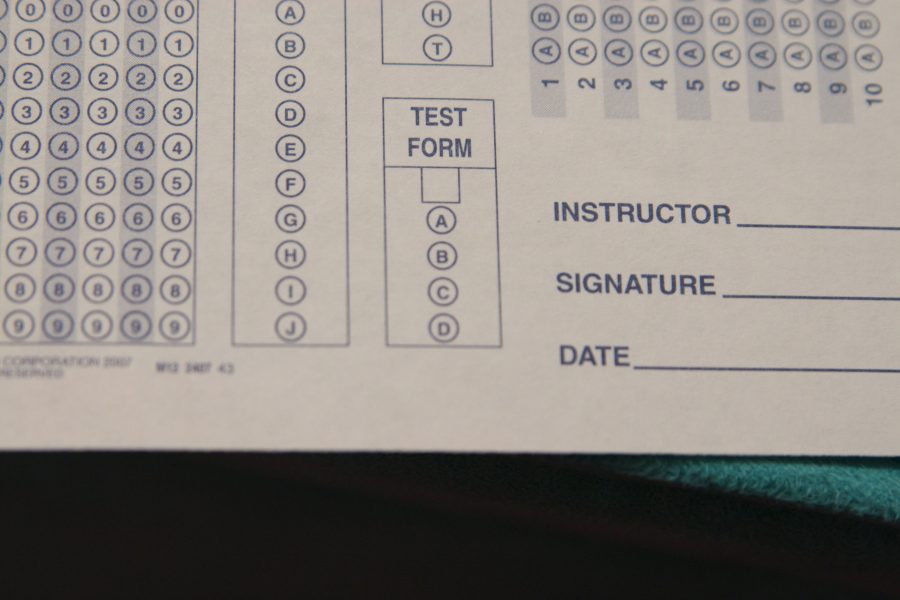Curriculum covers a wide facet of education. This book, written by Paul Peterson and Martin West on the “No Child Left Behind” dilemma, is an excellent example of a curriculum book that covers a broad base. The book focus’s on the accountability of the teacher, administration and school district on the education of it’s young.
When testing students on proficiency, there is much debate over how this should be done. Currently a standardized test is used to compare students’ scores throughout the United States. This standardized testing does not take into consideration environmental and cultural differences throughout our country. The standards are to test all students, regardless of their disabilities and count them in the composite scores of the school system.
I feel this type of testing is unfair for several reasons. First, there are many mainstreamed individuals who will never test at their grade level. This skews the test results in those school settings. The other inequity in testing is those students who do not take tests well. This could be those with a handicap or those that are visual learners rather than written learners. I also feel there is unfair testing advantages depending on the particular school system. Those systems with more money have a more comfortable school setting for students to test within.

Curriculum is the key in attaining the standard set by the “No Child Left Behind” mandate. This book talks about the importance of teaching correctly and to all students, no matter what their learning pattern is. It also discusses the testing of these students.
One chapter discusses the refining of education within the states or retreating from the mandate. I personally do not like the way “NCLB” has been implemented and the type of problems it is causing in the school system. If I were on a committee to vote whether or not to follow the mandate, I would vote against it. When not following the mandate, school systems do not receive Federal funding. Even though this would be a hardship on the school systems, I feel the teachers and their knowledge of the location of the school system would enhance the curriculum. They could teach standard teachings along with those relevant for the cultural area. Even if this means students would not receive the same education, I feel this would benefit the students in the workplace by understanding the culture of the area.
When looking at the school system, one must wonder how much control of the curriculum we are willing to give up to politics. The future of the public school systems weigh heavily on whether or not the Federal government will take total control of the policies and procedures used within the school setting. As politics become more and more involved within a school system, individuality disappears and the people will become the little robots of the government. Only learning what the government feels is fit and learning it the way the government wants it taught.
One of the biggest discrepancies within the “No Child Left Behind” mandate is the unintended consequence of racial subgroup rules. These consequences are seen by the school districts but ignored by the government. What is seen is the white western males knowledge being shoved down the throats of school age children. There is not a push for an unbiased curriculum. Instead, there has been more of a push for the beliefs of our president. This includes the inclusion of Christian religious beliefs being taught in the public schools. There is no room for acknowledging or accepting the fact that not all individuals attending our school systems are of the Christian faith. There is suppose to be a separation of church and state but it is not being seen with as clear of vision as prior to the adoption of this mandate.
This book has been an eye opener for me. I have never agreed with the way the “No Child Left Behind” mandate was initiated within the educational system in the United States. I feel strongly that not all areas of research were completed prior to its implementation. I also believe that the standard education given to Caucasian individuals is very different than that given to a race of color. Even in today’s times, there is still racial bias.
Curriculum is a standard that needs to be followed but a quality education through the implementation of a well-rounded curriculum is essential. This book gives the reader the most simplistic idea of what exactly is a good curriculum and then how do we hold the teacher, student and administration accountable for its proper teaching. I will refer back to this book to insure that I am following a path that allows for the necessary information to be taught to all individuals. I just hope that somewhere along the line, a test is comprised that honestly tests each and every individual on the knowledge that is known. I feel there should be a basic curriculum but I also feel that each cultural area would have special curriculum taught to help their students become productive citizens.

